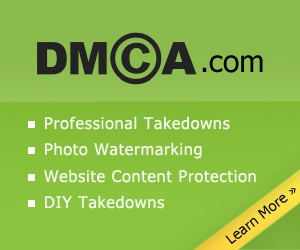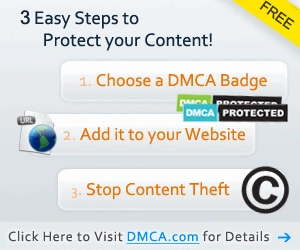3 Reasons For Webcam Models And Creators To Protect Content With DMCA
3 Reasons For Webcam Models And Creators To Protect Content With DMCA
As a webcam model and content creator, it is essential to protect your intellectual property online.
DMCA (Digital Millennium Copyright Act) is a federal law.
It was created to provide copyright owners with a way to protect their content from online infringements.
In this article post I will explore how webcam models and content creators can use DMCA to protect their content.
DMCA is a powerful tool that can be used to protect your content from being used without your permission. The process is simple, and it is something that all webcam models and content creators should consider. The DMCA process involves three steps:

3 Ways To Use DMCA Protection
Create a DMCA takedown notice
Send the notice to the infringing party and the hosting company
Wait for the content to be removed

How To Issue A DMCA Takedown
Step 1: Create a DMCA Takedown Notice
The first step in the DMCA process is to create a DMCA takedown notice. This notice should include the following information:
- Your name and contact information
- A description of the copyrighted work
- The location of the infringing content
- A statement that you have a good faith belief that the use of the content is not authorized
- A statement that the information in the notice is accurate and that you are the copyright owner or authorized to act on the copyright owner’s behalf
Once you have created the DMCA takedown notice, you will need to send it to the infringing party and the hosting company. This can also be done for you By DMCA.
Step 2: Send the Notice to the Infringing Party and the Hosting Company
The next step in the DMCA process is to send the DMCA takedown notice to the infringing party and the hosting company. You can usually find the contact information for the hosting company on their website. If you cant and have paid for DMCA to do this for you they will do all the hard work. The contact information for the infringing party may be more challenging to find, but you can try doing a Google search for their name or email address.
It is important to send the notice to both the infringing party and the hosting company because the hosting company may not be aware of the infringing content. Once the hosting company receives the notice, they will be required to remove the content from their servers.
Step 3: Wait for the Content to be Removed
The final step in the DMCA process is to wait for the content to be removed. Once the hosting company receives the DMCA takedown notice, they are required by law to remove the content within a reasonable amount of time. The amount of time varies depending on the hosting company and the specific circumstances of the case.
It is worth noting that the DMCA process is not fool proof. There are some hosting companies that may not take the notice seriously, and there are some infringing parties that may fight the takedown notice. However, the DMCA is still an essential tool for protecting your content online.

Setting Up DMCA Protection
To make the most of DMCA protection, you need to be sure that your content is copyrighted. Once your content is copyrighted, you can register your copyright with the U.S. Copyright Office. This will give you more legal protections and make it easier to file a DMCA takedown notice if someone uses your content without permission.
It is also important to include a DMCA notice on your website. A DMCA notice is a statement that lets people know that you take copyright infringement seriously and that you will take action if someone uses your content without permission. You can usually find DMCA notice templates online, or you can have a lawyer draft one for you.
What Devices Can You Use for DMCA Protection?
DMCA protection can be used on any device that is connected to the internet. This includes computers, smartphones, and tablets. If you are a webcam model or content creator, it is important to make sure that all of your devices are protected by DMCA
Finally, DMCA can be a powerful tool for webcam models and content creators to protect their content property online. By following the steps outlined above and taking measures to monitor and enforce their rights, creators can safeguard their work and ensure that they are properly compensated for their efforts.

My Social Media:
Unlike other blog post I have yet to make a video for this blog. So I will reserve this spot for previous DMCA video.


